Last summer, when residents of Carlton Mobile Home Park in Charlottesville received notice from the owners that the park could be sold in 60 days, they realized a crisis was imminent—they might lose their homes. The park is one of just two manufactured housing neighborhoods remaining in the city. One of the few non-subsidized, deeply affordable neighborhoods in the Charlottesville area, Carlton Mobile Home Park is home to about 200 people.
From our work with other manufactured housing residents in Central Virginia, we know that as more mobile home parks are sold to large companies, residents must fight against negligence, abusive practices, and illegal and unfair rent increases. When we heard about the potential sale of Carlton Mobile Home Park, my organization, Legal Aid Justice Center, mobilized with other local nonprofits to prevent the loss of this deeply affordable community. We canvassed, lobbied for funding from local and state sources, and benefitted from a Virginia law that allows a non-profit to submit a resident-supported counteroffer.
The Problem
As in many of your communities, rents in Albemarle County have increased by about a third over the past 5 years. Most of the Carlton Mobile Home Park households told us they were paying about $400 to rent the pads their homes sit on. The average cost of renting a two-bedroom home in Charlottesville is about five times that much. As of December, median home sales prices approached $500,000, putting homeownership increasingly out of reach.
Most of the over 60 homes in the Carlton Mobile Home Park are not truly “mobile,” due to their age. According to City Councilor Michael Payne, the residents whose homes could be moved would not have found relocation options because there were a mere two vacancies in parks within a five-county radius spanning over 2,000 square miles. Other local affordable housing options are extremely scarce; waiting lists for rent subsidies and public housing are years long.
The owners of Carlton Mobile Home Park were three family members who had inherited the property, at least one of whom lives locally. Over the years, representatives of Habitat for Humanity of Greater Charlottesville, which redeveloped a neighboring mobile home park with a similar non-displacement commitment, had approached the Carlton owners about purchasing the property but were told it was not for sale.
The initial purchase offer on the 6-acre property was for $7 million. At that price tag, the developer would almost surely have razed the neighborhood and built upper-income housing or converted the property to commercial use.
Organizing to Save the Park
In 2020, the Virginia Manufactured Home Lot Rental Act was amended. The law now requires sellers of manufactured housing neighborhoods to consider a counteroffer that is supported by at least 25 percent of residents. The counteroffer must be made within 60 days after the owner gives notice that they have received an offer of sale.
After discussing the potential mass displacement with non-profit housing leaders and city officials, we decided to put that opportunity into action. In early July, I recruited several canvassers to document resident support. I was joined by members of the local chapter of Democratic Socialists of America, a Legal Aid Justice Center intern, and a handful of service providers. The 90-plus-degree July temperatures made outreach challenging—but we were determined. As we got to know residents, we found out that their main concern was to have a home.
Almost everyone who helped with outreach was a monolingual English speaker, and many residents spoke only Spanish. With the help of translation apps, we provided bilingual flyers and petitions and had one-on-one conversations with residents of the park.
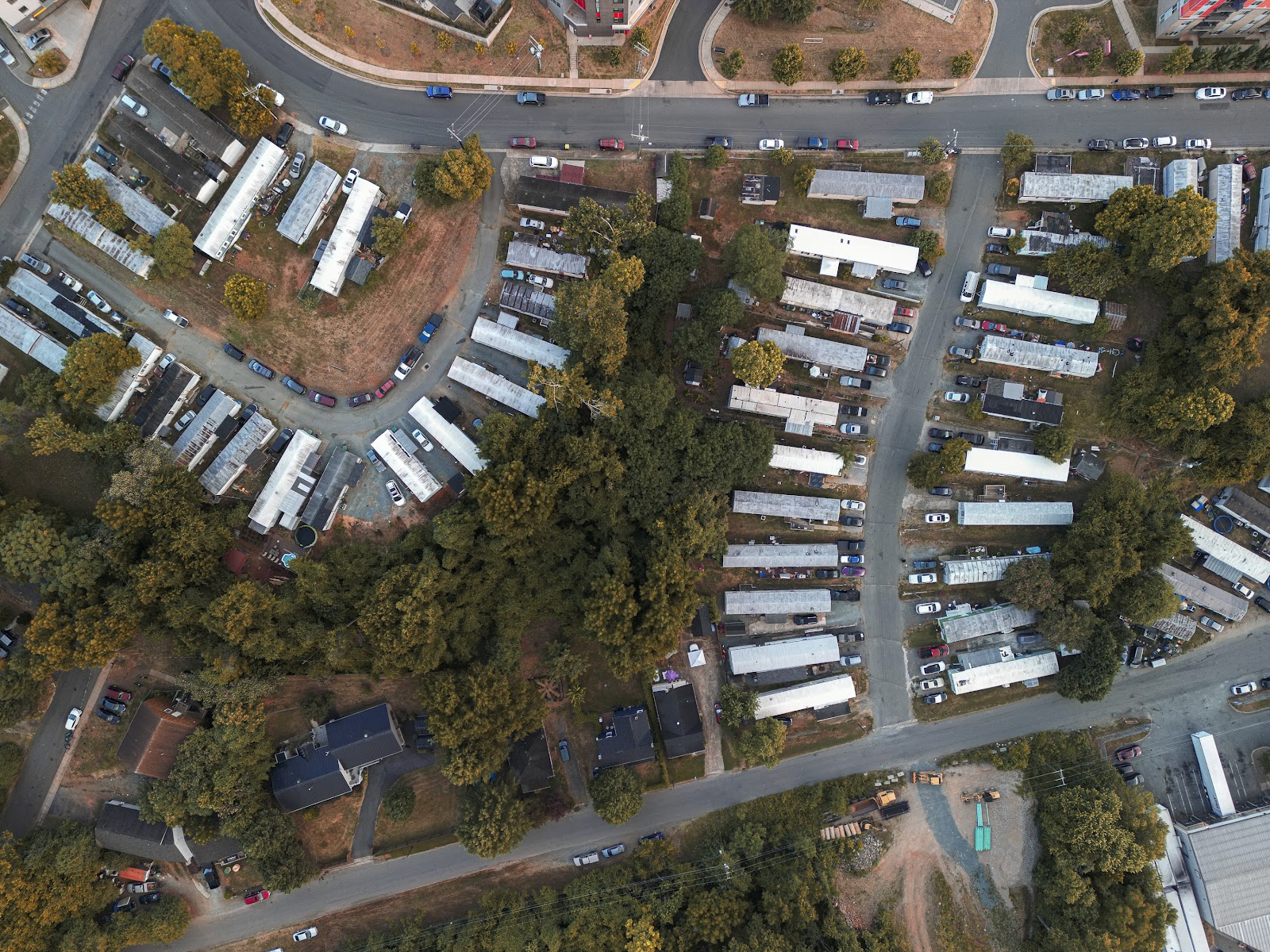
We started a petition and in less than three weeks, gained support from over 25 percent of the residents. Although residents’ top priority was to stay in their homes, they understood that a financially viable counteroffer would require a mix of housing options to increase density, necessitating a full redevelopment of the site.
Habitat for Humanity of Greater Charlottesville, the primary non-profit partner, held two community meetings. Residents and staff provided interpretation.
At the second meeting, residents proposed an impromptu negotiation and won a guarantee from the proposed co-owners, Habitat and their partner Piedmont Housing Alliance (PHA), that they could stay in their current homes for a minimum of three years. Additionally, Habitat and PHA committed to ensuring that each resident will have a home in the redeveloped neighborhood, fixing unsafe living conditions, and capping annual rent increases at no more than $15 or 5 percent during the next three years. They also asked residents to work with them to envision future redevelopment.
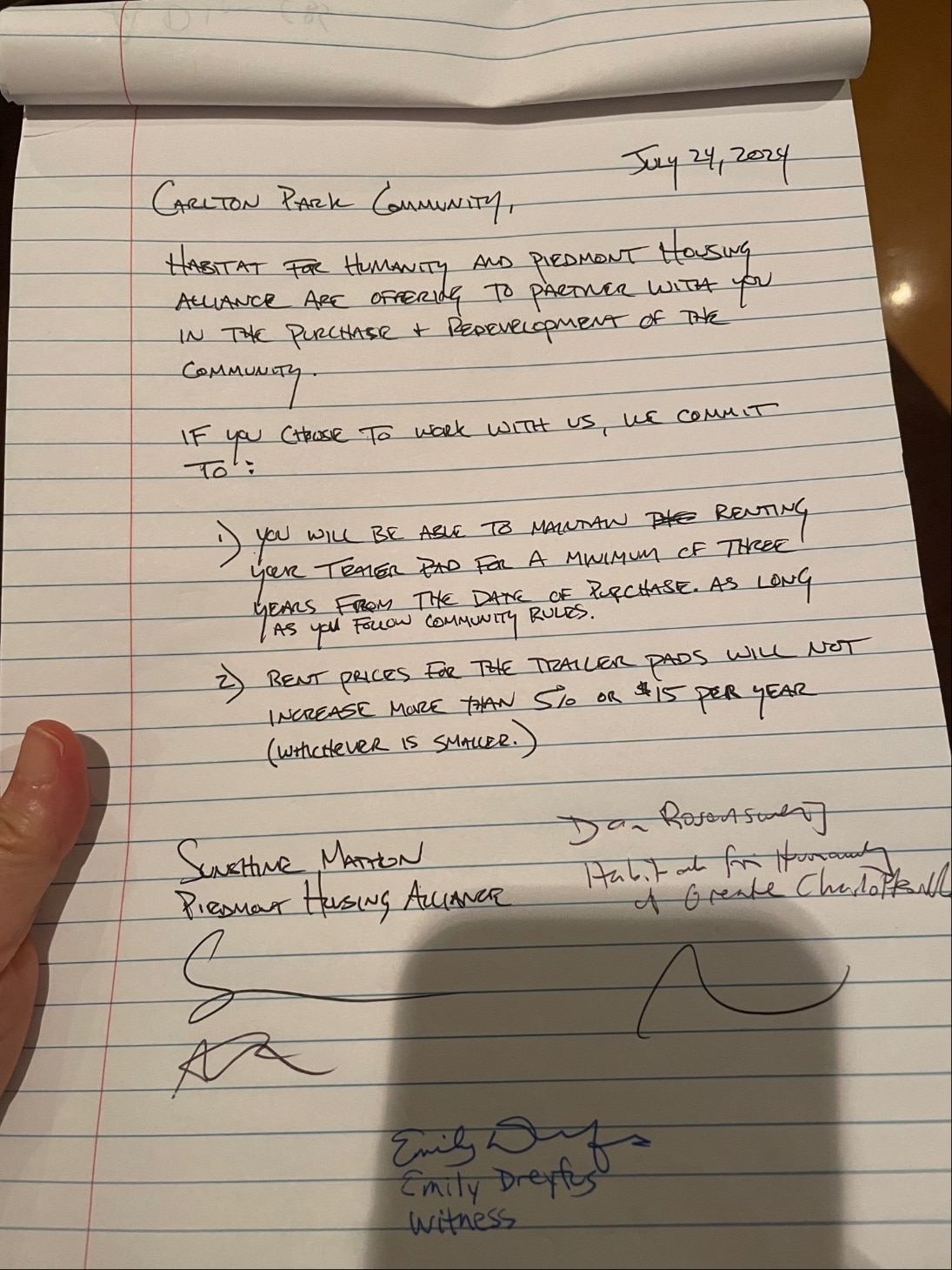
As soon as residents confirmed their willingness to support a purchase by Habitat and PHA, the clock started ticking. Bidding material needed to be developed, including lining up funding to show their offer was viable.
Why It Worked
The key contributors to our ultimate success were:
- The amended Manufactured Home Lot Rental Act,
- Dedicated nonprofit housing partners who quickly created capacity to create a viable purchase offer,
- City staff and elected officials willing to act promptly and go the extra mile to provide funding,
- Charlottesville City Council’s $10 million annual contribution to affordable housing,
- A state agency with emergency funding available, and
- Support from residents, local media, volunteers, and of course, the owners who were selling the park.
Local and state laws impacted this campaign dramatically. Charlottesville’s zoning reforms took effect in February 2024. The new laws were designed to promote racial equity by increasing housing opportunities in historically exclusionary neighborhoods and preventing displacement in lower-income neighborhoods where students and upper-income homebuyers have forced hundreds of people out.
However, these zoning reforms did not include the preservation of manufactured home parks. In the fall of 2023 when City Council members discussed the proposed city zoning overhaul, Councilor Michael Payne championed zoning protections for the remaining two manufactured home parks but did not receive support from other councilors. The lack of zoning for mobile home park preservation meant that Carlton Mobile Home Park was upzoned, along with most neighborhoods in Charlottesville. (The exceptions to upzoning were the “core neighborhoods” which are home to most of the city’s low-income and Black residents. These areas were zoned with anti-displacement and preservation/creation of affordable housing as top priorities.) Upzoning increased the value of Carlton Mobile Home Park and created an incentive for developers to increase density.
If a for-profit offer had won out, a small number of low- to moderate-income people would probably have benefited from the city’s new inclusionary zoning provisions, which require that 10 percent of new homes in large developments be rented to people earning under 60 percent of the area median income. But the residents of Carlton Mobile Home Park would very probably have been displaced in the process. They would likely have become homeless or moved dozens of miles away to more rural areas, where inadequate transportation options would have made them vulnerable to losing their jobs.
[RELATED ARTICLE: Manufactured Crisis: Losing the Nation’s Largest Source of Unsubsidized Affordable Housing]
The Virginia law governing manufactured home community sales had rarely been used successfully prior to this campaign because of its weaknesses. It imposes no obligation for the seller to accept a reasonable counteroffer, only to consider it. Additionally, the required funding for this type of preservation is often an insurmountable barrier, especially within the extremely tight 60-day time frame. My colleagues at the Legal Aid Justice Center have worked with partners in Northern Virginia to make similar attempts twice before, unfortunately without success.
In addition to the commitment and hard work of local partners, two additional factors helped us win this campaign. First, city councilors and city management responded to this emergency promptly and thoroughly. The council committed over $8 million in funding over the next several years to support the offer by Habitat and PHA. Without city funding, it would not have been possible to save the existing households from displacement and ensure the availability of deeply affordable housing on this land.
Many localities have not invested as deeply in affordable housing, adding to the barriers when such an opportunity arises. In this case, with the city’s support, Habitat was able to offer $7.25 million, sweetening the pot a bit for the sellers by exceeding the original offer. Virginia Housing (the state housing finance agency) provided a $2 million, 5-year, interest-free loan with payments only required at the end of the loan. Community Housing Capital (a NeighborWorks CDFI) provided a $5 million, 5-year loan.
Second, media coverage was extremely positive. Extensive coverage likely helped the sellers realize what was at stake, and the sellers’ local roots probably made a difference as well. The sellers could have walked away after considering the Habitat offer, but they chose to support a community-based solution that ensured residents had stability and long-term affordable housing.
Now residents of Carlton Mobile Home Park have a more secure future, one that thousands of other Virginia residents also deserve. The best-case future scenario would be a statewide law to preserve manufactured home parks, paired with sufficient funding and technical assistance to improve conditions and support nonprofit and resident ownership. Local governments, nonprofits, and resident associations should have a right of first refusal whenever a manufactured home park goes up for sale.
At a minimum, Virginia should require landlords to give longer notice to residents before a sale. In most cases, the 60-day timeline alone creates an impossible hurdle. We only learned of the original offer weeks after it happened, when a partner organization shared the information. Requiring owners of parks to notify housing authorities, local legal services offices, and local nonprofit developers might also help preserve parks in the future.
This campaign was one success in a bigger fight: preventing affordable manufactured housing neighborhoods from being lost to private equity and investment groups. Once this affordable housing is out of local hands, it becomes much more difficult to preserve. Thankfully, in this case, we had a combination of inspired allies, available funding, enthusiastic residents, and a lot of fast work!


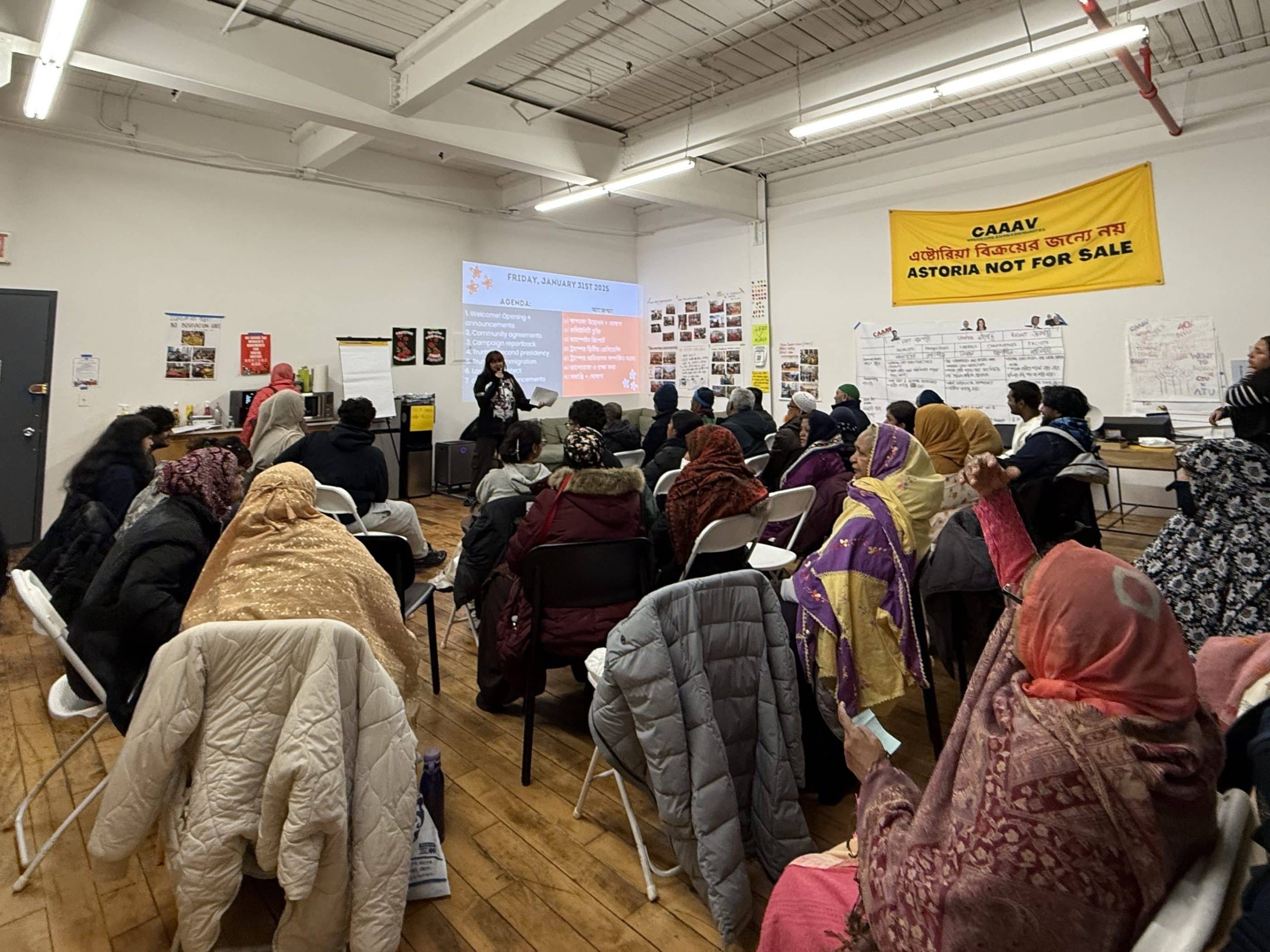
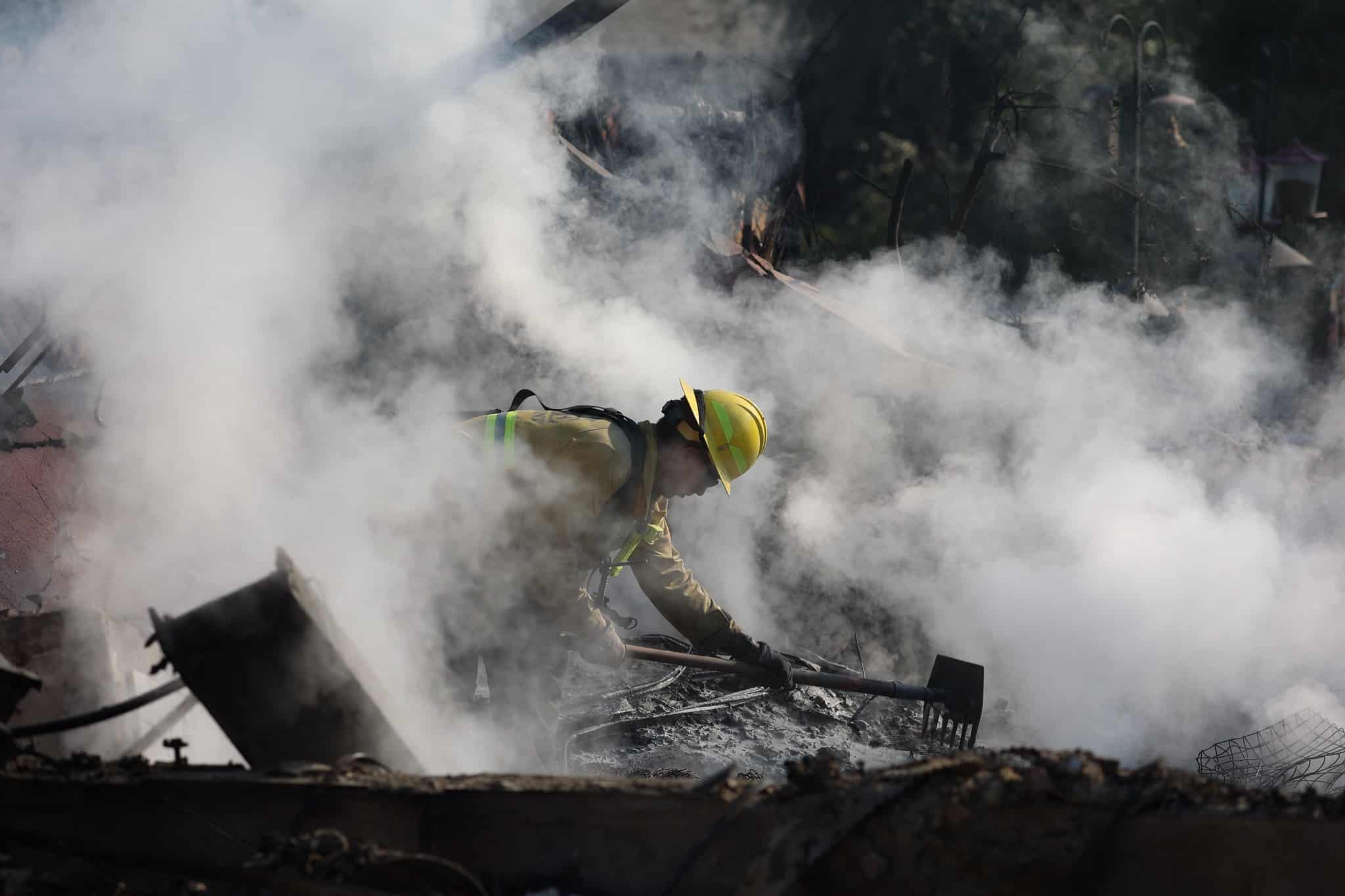
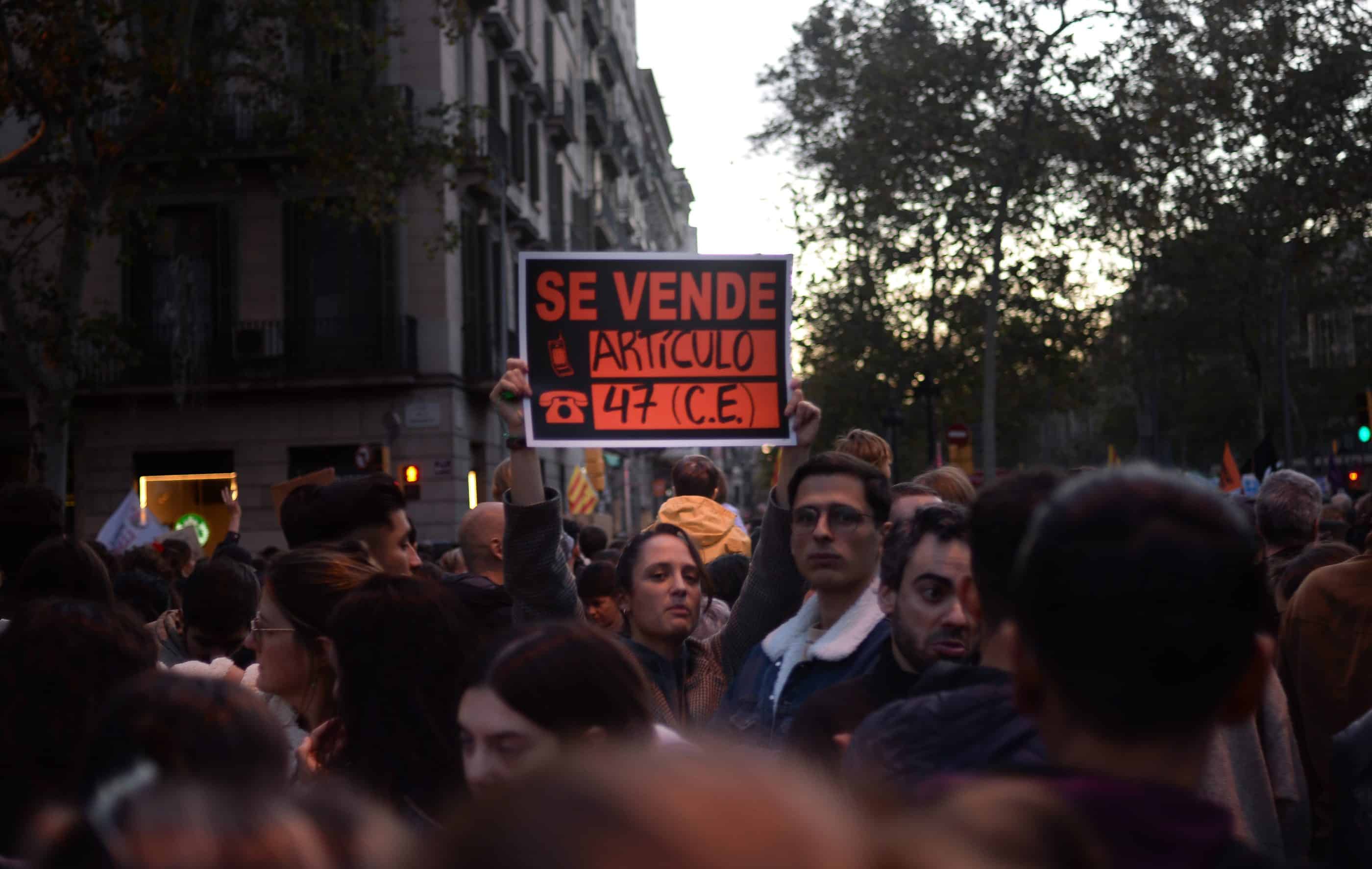
Good work! Is there any chance that a permanently affordable cooperative4 housing is being considered for the replacement development?